On 2nd March 2014 a tall man with curly hair, lean but strong walked into the RWE- Sporthalle in Mulhiem, Germany. He wore a t-shirt that read BHAT and INDIA right below it. Arvind Bhat at 34, was the oldest men’s singles player in the tournament as well as the Indian team. He had entered the finals of the German Open Grand Prix Gold. It was drizzling on the evening he stepped on the court. The match was scheduled at around nine in the night. He had followed his routine perfectly that day. Being a regular practitioner of the Sudarshan Kriya and Pranayam he knew the importance of focusing on his breath. He was constantly keeping tab on the intake of his breath and the speed at which he was letting it out. He had not talked much to any one that day. There was no discussion on a strategy to play Hans Vittinghus from Denmark, a player who has one of the best defence in the circuit. Arvind had decided to rely solely on his instincts. The same instincts that almost 12 years back guided him to take up Badminton professionally and choose a path less traveled. Especially when he already had an Engineering degree in his hands. Before I get to the German Open and Arvind’s historic win, it is crucial for me to talk about his journey. A journey that is nothing short of fascinating. The journey is always more interesting than the destination. The destination never teaches us anything it is always the way to the destination that has all the lessons.
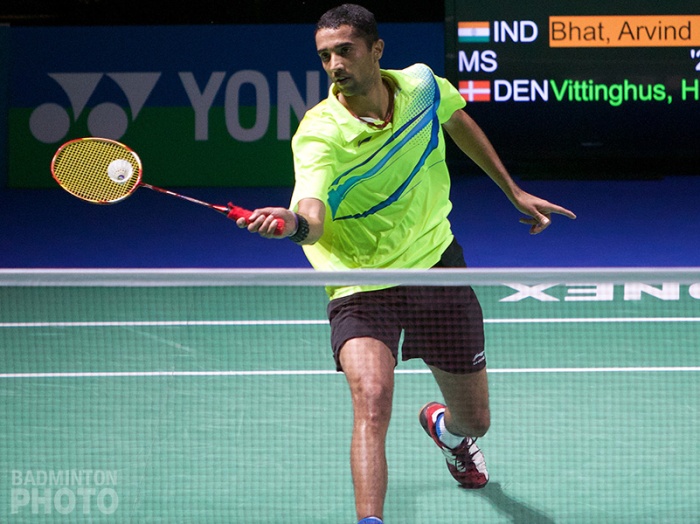
Nothing about Arvind’s Badminton career is conventional. If you ask every top player in India today when did they start playing serious Badminton, the average age would be anything between 10 to 13 years. If you ask the same question to Arvind his answer would be 22. Yes 22 ! Arvind had almost quit Badminton as he was pursuing an Engineering degree. He did engineering like any other student. Regularly going to college and attending majority of classes. He would play Badminton as a hobby 3 times a week. He would do odd jobs for money to cover his expenses. His main objective at the age 18-22 was not trying to hit the shuttle on the lines but making money to support himself. But destiny had other plans. He got his first sign from the universe with a break to represent the Indian team when he reached the final of the National Championships in 2002. He did his first running and weight training session that year at 22. Mostly all professional players start weight training at the age of 14 (he was 8 years late). He was introduced to the concept of diet and supplementary diet only at the age of 26. At 22, another significant thing happened that inspired him enough to play the sport and listen to his heart; Pullela Gopichand won the All England Championship !

After joining the party pretty late compared to his contemporaries, he realised there was a lot of catching up to do. Even though he knew this he loved and enjoyed every change that Badminton brought to his life. The training, the hardwork, the sacrifices, the wins and also the losses. At 22 years of age it certainly takes a decent amount of bravery to completely switch your life from being an Engineer to becoming a full-time professional athlete. Courage is a very rare thing to possess. Arvind’s courage was put to test a lot of times all through his career. He had his share of injuries every year. He was regularly injured. He had a serious injury that needed surgery and threatened to finish his career in 2006. But he marched on with just one aim in his mind that he had to win at least one big international event before he retired. By the time he reached the peak of his career he was playing opponents atleast 4-5 years younger than him. They were faster, fitter, and stronger than him. But if he was ever worried about this, one never saw it.
I had won my first senior national the same year Arvind won his second national title. In the final he beat P. Kashyap. I remember very vividly that for most of us Arvind did not stand a chance. Kashyap was in such a great form. But all of us witnessed one of the most clinical, sharp, and brutal finals we had ever seen. Arvind won the match in straight games and showed us all some of his best Badminton ever. But that was not his best Badminton, not yet. His best Badminton came two years later in 2014. This time not just India but the whole world took notice.
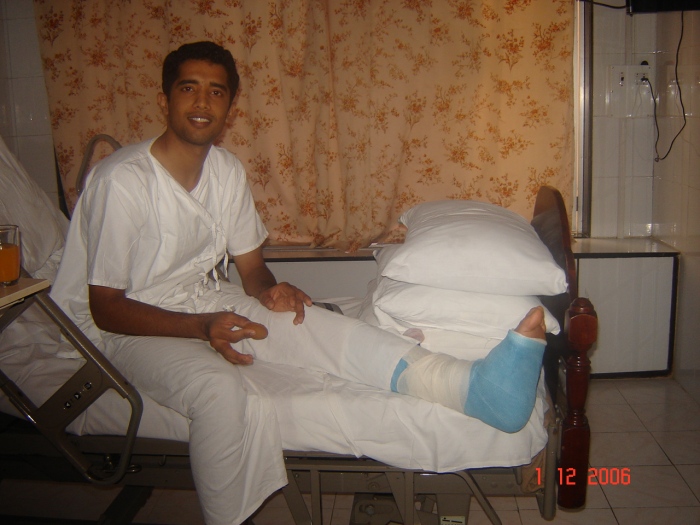
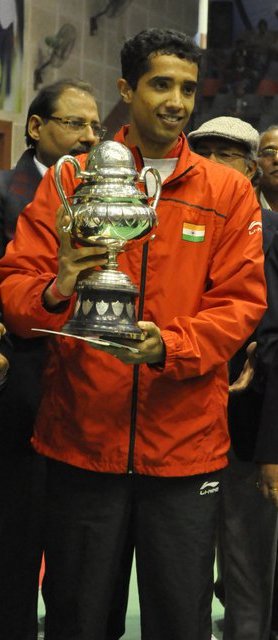
A week before he played the German Open; he entered an all India event in Bangalore. He wasn’t sure if he wanted to play the event at all. He had a severe back ache and he was not too sure about playing. His physio, Muthu gave him enough confidence and asked him to play. Arvind lost to 15-year-old Siril Verma in the second round. After this loss Arvind had almost made up his mind to withdraw from the German Open. Though he knew that even if he didn’t play the German Open he had to go to Germany and play his club matches the weekend before the German Open was scheduled to start. At this point he was ranked 87 in the world. He was not sure if he would get a main draw entry in the German Open. He waited till the draws of the tournament came out. He made the main draw. He decided he was going all the way to Germany anyway, so he might as well play the tournament too.(Thank God!) He spent the one week in India doing weights, resting and meditation. He never entered court the week before he left for Germany.
He played two singles for his club in the club matches. He beat two decent players in the league. In both the matches he won beating his opponents in a under-10 score. These two wins were crucial to get his confidence back. Arvind had to play a higher ranked player right from the second round in the German Open. He was never scared of playing anyone in the draw. In fact his experience told him it was good to play top players in the beginning as they were most vulnerable. He beat Hu Yun in the second round who was world No.4 at that time. After passing the Hu Yun test he felt anything could happen if he really focussed. His back held up pretty well all through the match. Also the rest and treatment from the week before; which he thought would be a hindrance to perform; actually seemed to have helped him to peak.
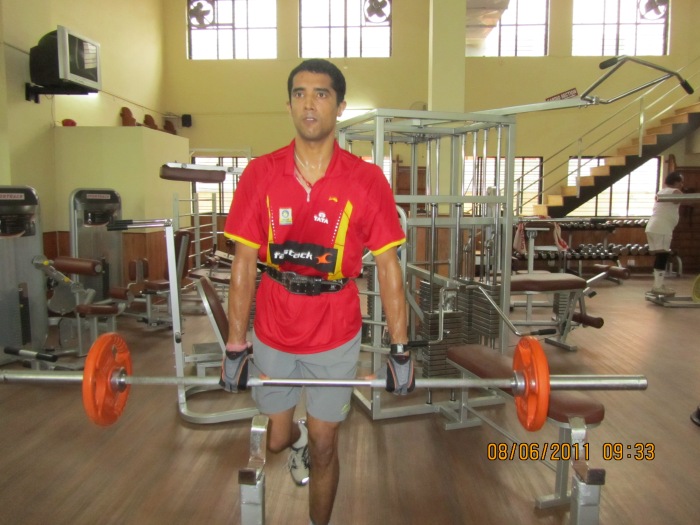
The match against Hu Yun had drained him and he had to really dig deep inside for the win. It gave him the confidence of going right till the end. Although he also knew he could not survive the full week if he played long matches every single round. Fortunately the next 2 rounds he won quite quickly, in half an hour each. The easier matches helped him save some energy. He beat Darren Liew and Victor Axelsen in straight games. He felt he had luckily managed to save enough fuel to survive right till the very end. Arvind played a thriller of a match in the semifinals against Chinese Taipei’s Tien Chen Chou. Arvind had no problems in disposing off Chou in the first game after taking a 6-3 lead which he was able to maintain all through the first game. Chou however meted out the same treatment to Arvind in the second game when he broke off at 6-6 and marched ahead. But in the decider, Arvind fought till the end after Chou had stepped up his game. They battled from 6-6 to 14-14 with the lead changing hands frequently. Arvind was ahead by a point lead after that and even though Chou caught up at 20-20, he successfully staved off the challenge in the end.
If you ask a player how exactly did he win a final, it is very difficult to get a precise answer. Finals are always very difficult. You are tired both mentally and physically. You are in a zone. Arvind had played some great matches throughout the tournament. Vittinghus was a tough opponent, a fighter. Arvind had a lot at stake with this match. If he won this final he would create history. He would be one amongst ten Grand Prix Gold or Super series victories in the history of Indian Badminton. He would be the only Indian player to have won the German Open title. He would also be one of the few players in the history of modern Badminton to have won a 4 star event at the age of 34. Most importantly he was one win away of his very own dream title. That one title that he had worked towards for the last twelve years ! Though none of this was on Arvind’s mind that day. He had lost enough finals to learn his lessons from. He entered the court calm and confident. His control over his emotions worked wonders. He won the first set and took the lead in the second at 17-12. That was the first and only time he thought about winning and celebrating which soon made him lose focus and become complacent. After losing the second game he told himself to fight till he couldn’t fight anymore. He did exactly that. He kept fighting until he won. After the win there was absolutely no outward celebration on his part. He moved along the court with the calm of a meditating saint.
It took him almost half an hour to realise the magnitude of his win. Following were some of his initial reactions.
“Initially for the first 30 minutes or so I was quite cool. Also since I had trained myself to think like a Champion I behaved like one. Not too much excitement, not showing it too much. Just a cool demeanour. I had promised myself in the 3rd set the same too. No celebration if I win. But after about 30 minutes all hell broke loose. But only inside of me. I was like ‘I did it!’ I did what was unexpected and I did something which none of my peers had done. Only a handful of Indians had done this before me. Maybe about 8-10 people only. So I felt like Top 10 all time greats of Indian Badminton. I felt good and proud, but all inside of me. Nothing outside. Post 2 hours I had lots of congratulatory messages from some unexpected quarters. It looked like many people in India had watched it live simply because there was a cricket match of India which India had lost against Pakistan. So the disappointed crowd were channel surfing and found my win satisfying. “

Every player has their own story. What makes Arvind’s story different is that he did not start his career as a normal sportsman would. He had never played good level of Badminton till he reached the age of 22. He didn’t have any wins in the junior level to build his faith on. There are struggles, challenges, sacrifices, frustrations, injuries in every player’s life and Arvind had to face it all after 22 years of age. Being a champion is not age bound. He always found a way to get past everything and get to his dreams. It took him close to twelve years to realise his goal but he never lost sight of the goal till he finally achieved it.
Arvind’s journey teaches me a lot of lessons. Lessons in belief, in fighting society’s norms about age and careers, in making your own rules and sticking to them, in patience, in perseverance, in fighting the battle within and keeping the demons in check. Arvind announced his retirement recently knowing he had fulfilled his destiny and with no regrets. His German Open win will always remain an inspiration. Arvind Bhat is etched in history with the stars of Indian Badminton where he will always very rightly belong.
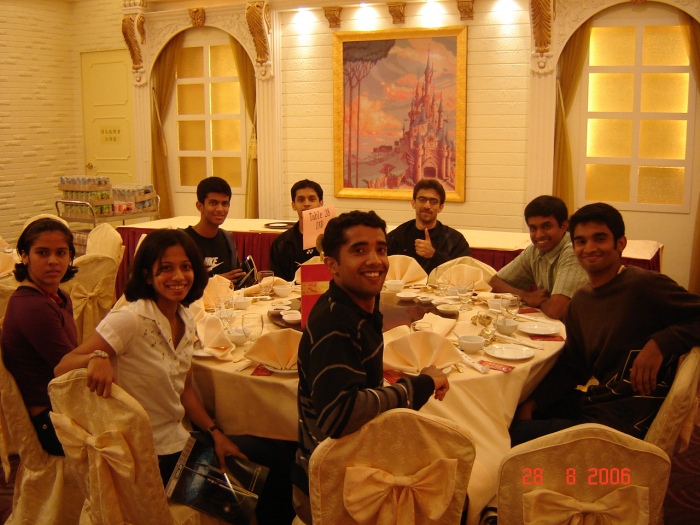
I was very close to Arvind He was my ” Rikscha – Driver ” of my ” Golf Variant VI ” and my Sherpa and I , his ” Personal Photographer ” ! Wenn slept in the Hotel Kölner Hof , which closed in spring 2015 , ist HISTORY Tool !
LikeLike
Very inspiring
Lucky to be his engineering classmate and Close friend
LikeLike
Inspiring write up on my cousin. Proud of him, as always! Have watched him as a youngster grow up cheerfully with his siblings. His dedication, passion and perseverance will stand as a role model for future generations of sportspeople. And of course, the way he carries himself, will all humility.
LikeLiked by 1 person